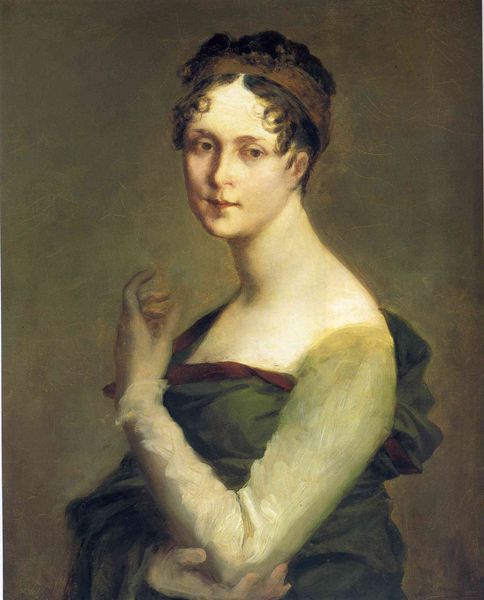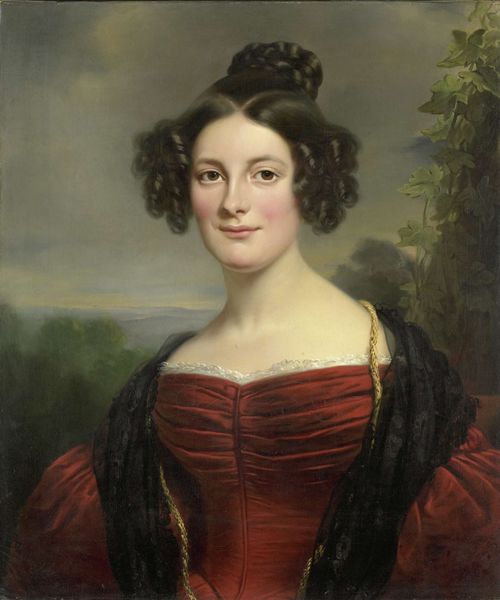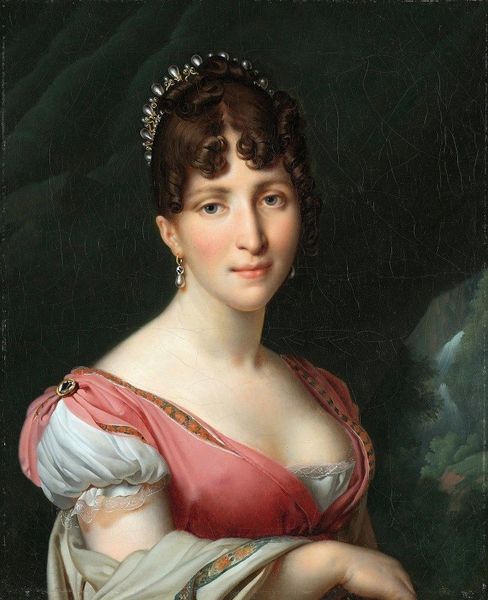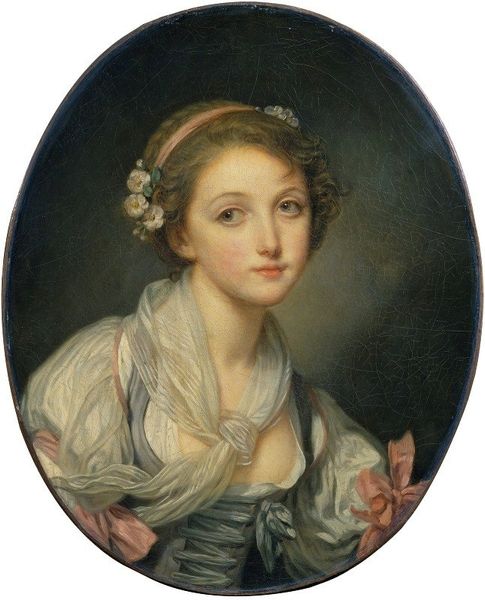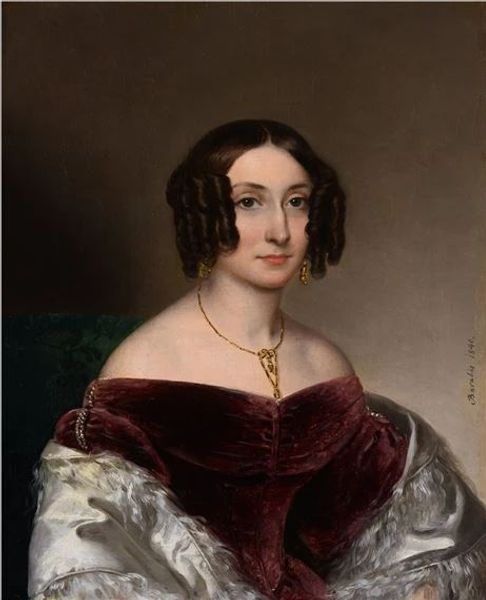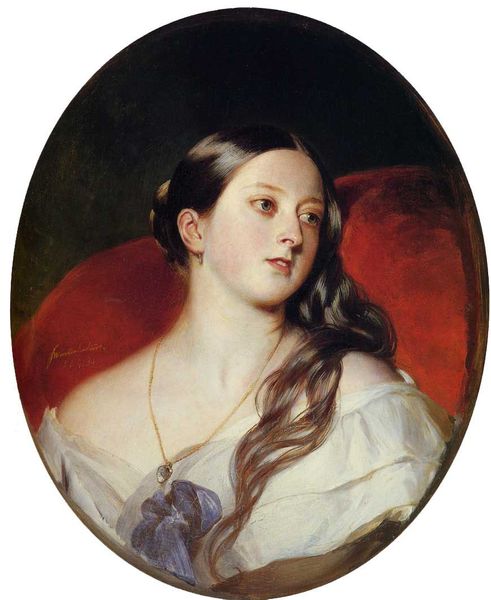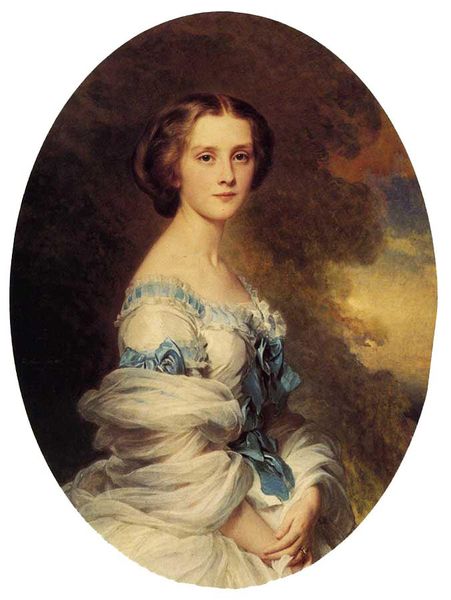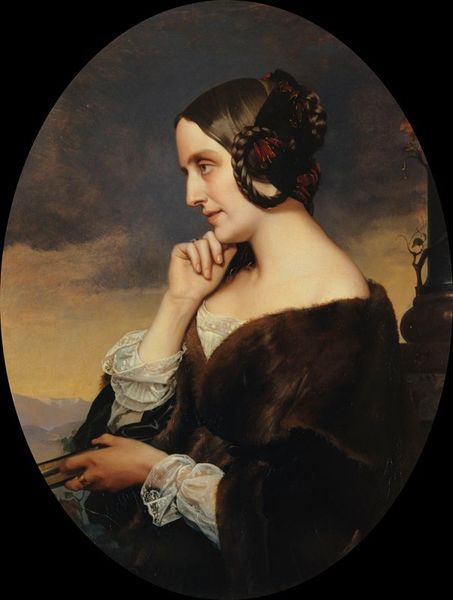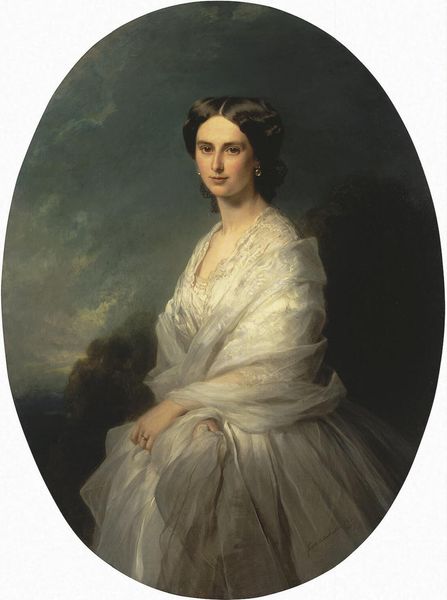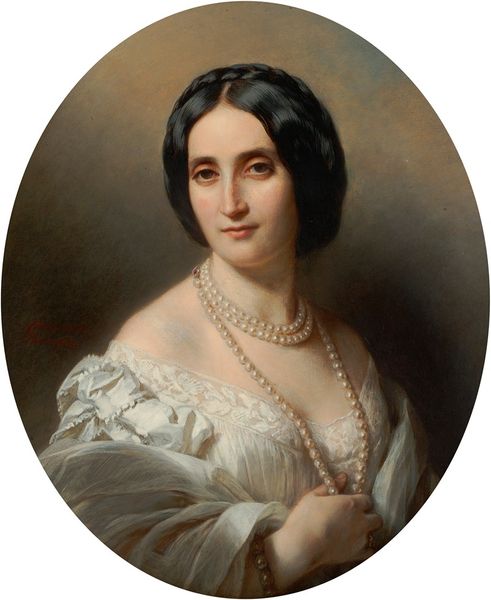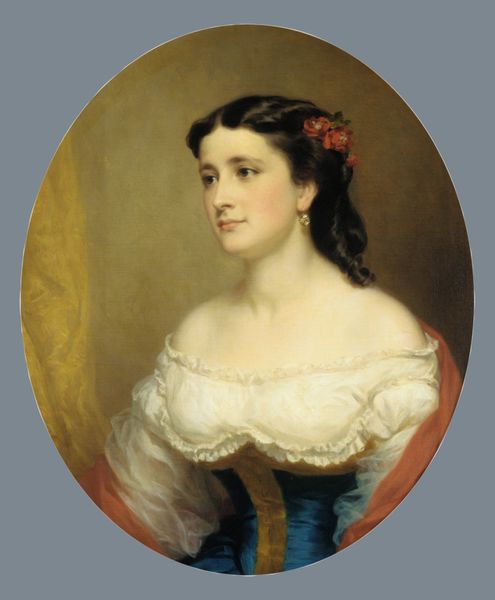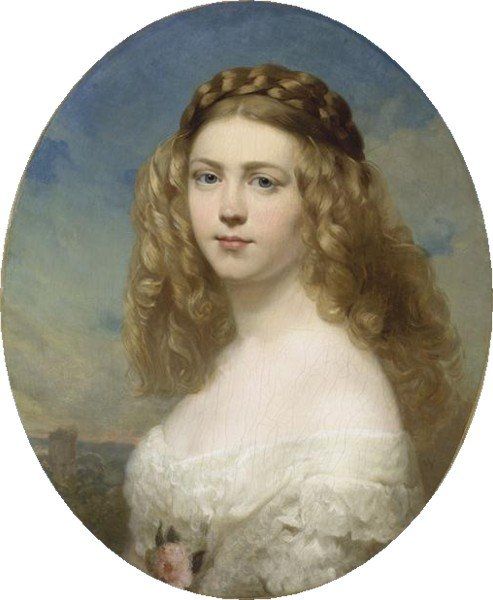
Lady Clementina Augusta Wellington Child Villiers 1857
0:00
0:00
franzxaverwinterhalter
Private Collection
Copyright: Public domain
Franz Xaver Winterhalter painted this portrait of Lady Clementina, its current location unknown. She is adorned with a wreath of leaves, a motif stretching back to ancient Greece, where victors and heroes were crowned with laurel, embodying triumph and honor. The wreath’s symbolic journey evolves through time. In Renaissance paintings, we see it encircling the heads of allegorical figures, signifying virtue and intellectual prowess. This echoes in Lady Clementina’s portrait, where the wreath suggests a cultivated intellect and serene nobility. It's a deliberate invocation of classical ideals, aligning her with timeless notions of beauty and moral excellence. Consider Botticelli’s "Primavera," where Flora, goddess of spring, is similarly adorned, symbolizing renewal and fertility. This continuous thread reveals how cultural memory shapes our perception, imbuing symbols with layers of meaning accumulated over centuries. These symbols are powerful forces, engaging viewers on a deep, subconscious level. Observe how the classical wreath has resurfaced, evolved, and taken on new meanings in different historical contexts, demonstrating its non-linear, cyclical progression through our shared visual lexicon.
Comments
No comments
Be the first to comment and join the conversation on the ultimate creative platform.

